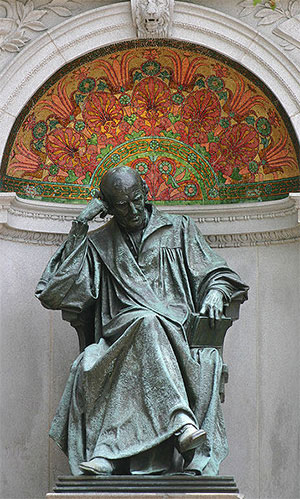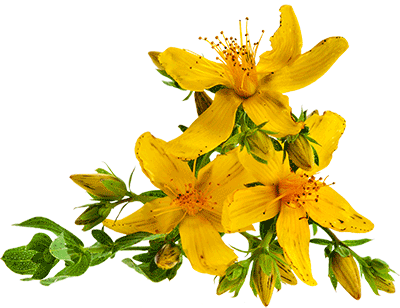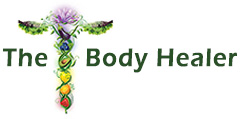Homeopathy
Homeopathy is a gentle, natural system of healing. It involves using a highly diluted version of a specific substance (or substances) that, in higher doses, would actually cause the illness or symptom being experienced.
"Homeopathy has been integrated into the national healthcare systems of numerous countries, including France, Germany, the United Kingdom, Sri Lanka, India, Pakistan, and Mexico."
World Health Organization
|
Based on the theory of treating “like with like,” the remedies then stimulate the body’s natural healing abilities (sort of like a natural vaccine). For example, symptoms of a throbbing headache may be treated with a remedy of belladonna (which at full strength would actually cause the throbbing headache). This is why the term Homeopathy comes from the Greek words homeo, meaning “similar,” and pathos, meaning “suffering.”
Two major approaches of conventional medicine follow the same principle of Homeopathy:
- Vaccines use a weak form of the virus, which boosts the immune system to develop an immunity against that particular virus, and
- Conventional allergy treatments, where the allergic substance is given in a tiny dose to stimulate tolerance in the body.
Whereas conventional medicine focuses on 1) pain relief, and 2) eradicating the disease, Homeopathy holds that the disease is not external but is an internal imbalance that is expressing itself in symptoms. Homeopathy draws out the symptoms and assists the body to begin healing itself by stimulating the body's natural defenses.
With conventional medicine, individuals who are diagnosed with the same condition (e.g. high cholesterol) will all typically be given the same medication, whereas with Homeopathy, each person will be treated individually based on the entire "symptom picture" of the person, including their state of mind, lifestyle, diet, and emotional characteristics.
Recognized Worldwide

US retail sales of homeopathic and herbal remedies reached $6.4 billion in 2012 - up almost 3% from 2011, and growing 16% over the past 5 years.(1)
Remedies are routinely prescribed by MD's and DO's worldwide, especially in Europe, including by 30-40% of French and 20% of German doctors. In France, 35% of the costs of homeopathic remedies prescribed by an MD are reimbursed from health insurance.(2)
No Side Effects
Homeopathic remedies are so extremely diluted that they are considered non-toxic and have no known side effects. They can be used by people from all walks of life from babies, to the elderly, pets, and pregnant women. Homeopathy is often used to compliment traditional medicine and there is considered little to no danger with medicinal interactions due to the extreme dilution of the remedies. However, as with any medication or remedy, it is recommended you discuss using them with your doctor.
Let's take a much closer look at Homeopathy, and at the interesting method used to make the remedies. Let's also see how these remedies work to stimulate healing within our body.
The origin of homeopathy...
The principles of Homeopathy have been referred to in the times of ancient Greece by Hippocrates, a Greek physician in the Age of Pericles who is considered one of the most influential figures in the history of medicine. Hippocrates is often referred to as the "father of medicine."
Homeopathy was developed as an accepted healing method in the early 18th century by Samuel Christian Hahnemann (1755-1843), a German physician, chemist, and linguist who founded the system based on the concept of “like cures like.” Trained as a conventional physician, Hahnemann became increasingly disillusioned about what he considered to be the drastic and harsh medical procedures of conventional medicines. In an effort to treat patients with the minimum amount of distress and side effects from medications, he began to explore the use of herbal remedies.

While translating a treatise on a Materia Medica. by Scottish physician and chemist Dr. William Cullen, Hahnemann experimented on Cullen’s theory of extracting quinine from cinchona bark to cure malaria. Upon taking the quinine himself (although he had not contracted malaria), he began to develop symptoms that simulated a patient ill with malaria. This led Hahnemann to investigate the possibility that a substance may create the very symptoms that it could also relieve.
This concept came to be known as “like cures like” and is the basis of the first Law of Homeopathy: The Law of Similars.
The life size bronze statue is of the Dr. Samuel Hahnemann Memorial in Washington D.C.
How Remedies Were Developed: Symptom-Pictures
Hahnemann began to systematically test individual substances on himself, family, friends, and volunteers. These substances were plant, animal, or mineral based. In early experiments, the intake of certain substances would often cause the patient to become worse, which led Hahnemann to begin diluting and vigorously shaking the remedy during preparation. This process was called “potentization” and also included banging the substance against a hard surface.
Meticulous records of these experiments and their results were kept, which Hahnemann called “provings.” During these experiments, Hahnemann also discovered that potentization of the substances not only increased their effectiveness, but also caused them to 1) last longer, and 2) eradicated many side effects of the final remedy.
His provings aimed at establishing a set of symptoms known as a “symptom picture,” which were all of the symptoms caused by taking a particular substance. When the symptom picture matched the set of symptoms of an illness or imbalance in the patient, that particular substance was notated as the most effective at stimulating the energy within the patient to treat the illness. The critical key was to choose a proving that exactly matched the totality of the patient’s symptom picture.
Combined with his knowledge of conventional medicine, herbs, and toxicology, 6 years later Hahnemann eventually began treating his patients with appropriate dosages of his provings. When a patient described his symptoms, the symptoms were then compared with his collection of provings until a match was found, and the patient was then treated with that proving.
The Materia Medica
These provings then became more commonly known as remedies, and led to Hahnemann opening the first homeopathic clinical practice where he named his new system of medicine “Homeopathy,” as it represented a combination of the Greek words “like” and “suffering.” During the course of his lifetime, Hahnemann proved over 100 remedies and continued to refine his system. He published his findings in six volumes called the Materia Medica Pura.
Over time, the provings in these volumes grew and expanded, and today, the continually updated Material Medica is used as a key source of homeopathic remedies. Over time, the original Materia Medica has been expanded upon by various practitioners around the world, with each version (called a repertory) named after the individual who combined their own knowledge and experience of the remedies with the original documentation. Over 100 homeopathic repertories have been published since 1873 (1,423 pages of 642 remedies). Boericke's Materia Medica and Kent's Materia Medica are two such examples that are inexpensive and widely available.
Hans Burch Gram (1787-1840), a Boston-born doctor who studied Homeopathy in Europe, is widely credited for introducing Homeopathy into the US in 1825. In 1835, the first homeopathic medical college was established in Allentown, PA. By the early 20th century, there were 20 homeopathic medical colleges and more than 100 homeopathic hospitals throughout the US. Two key Homeopaths, Dr. Constantine Hering and Dr. James Tyler Kent, later outlined an understanding of how illnesses are cured in Homeopathy, establishing a clear framework for treatment.
How homeopathic remedies work...
There is no consensus on how homeopathic remedies work. A common theory is that the remedies stimulate the immune system of the body, similar to a vaccine.
As with Oriental Medicine, Ayurveda, and Bach Flower Remedies, Dr. Hahnemann viewed illness as a compromise of the energy of the body, which ultimately results in physical symptoms. He believed homeopathic remedies replaced the illness with a similar but weaker form of the illness, which the body could then develop an immune response to.
Learn more about
Oriental Medicine  Ayurveda
Ayurveda  Bach Flower Remedies
Bach Flower Remedies
A healthy person naturally resists disease, regardless of being exposed to a variety of bacteria and viruses. This is because the vital energy of the body is strong, which means their immune system is strong, and their susceptibility to illness is therefore low. Depending on external factors such as pollutants, poor diet, emotional, physical, and psychological stresses, this ability to naturally resist sickness changes as the body becomes overwhelmed and begin to vibrate at a lower vibrational frequency. This is a key reason Homeopaths place great emphasis on gaining an overall understanding of the patient, their diet, and their lifestyle habits, instead of simply focusing on the illness with traditional medicine today.
The theory of the remedies holding the "memory" of the substance in the original extract, even when the remedy has been diluted to such a degree that less than one molecule of the original extract remains, is offered significant credibility when considering the work of Japanese researcher Dr. Masaru Emoto.
|
Dr. Masaru Emoto
In 1994, Dr. Emoto produced ground-breaking work on the effects of exposing water to different words, music, pictures, and photographs. In his best-selling books, “The Hidden Messages in Water” and “The True Power of Water,” Dr. Emoto presented the findings of his research.
 Water was exposed to specific words such as “love,” “you fool,” “stress,” “happiness,” and “unhappiness.” The water was then frozen and the crystalline structure of the water during the freezing process then photographed. The water crystals were dramatically affected depending on the words that the water was exposed to. Water exposed to positive words, music, and imagery formed beautiful crystals, while water exposed to negative words, music, and imagery formed distorted, fractured, and broken images. Water was exposed to specific words such as “love,” “you fool,” “stress,” “happiness,” and “unhappiness.” The water was then frozen and the crystalline structure of the water during the freezing process then photographed. The water crystals were dramatically affected depending on the words that the water was exposed to. Water exposed to positive words, music, and imagery formed beautiful crystals, while water exposed to negative words, music, and imagery formed distorted, fractured, and broken images.
Dr. Emoto also noted that the same word used in different languages formed very similar, though not exact crystalline structures, suggesting that water responds to the essence of the word and the energy behind its meaning as accepted by the mass consciousness. |
High levels of controversy and debate have surrounded Homeopathy, largely because a number of its key concepts do not appear to follow the laws of chemistry and physics. Disdain is held by some in conventional medicine at the theory of remedies holding a “memory.” The failure of science to understand how Homeopathy works is not unique to only Homeopathy - this lack of understanding is found with many other natural healing methods, including Oriental Medicine (especially acupuncture) and Ayurveda, both respected, complete systems of healing used for hundreds of years.
Various clinical trials have been conducted on the effectiveness of Homeopathy, some yielding positive results, others yielding no results. Some skeptics claim that success is due to the placebo effect, but Homeopathy has been used successfully on animals and babies who are not themselves susceptible to the influence of a placebo effect.
How homeopathic remedies are made...
There are precise guidelines for creating homeopathic remedies.
Plant, animal, or mineral extracts are used in homeopathic remedies and are diluted thousands of times, usually in a water/alcohol combination.
- The original substance is finely chopped up and added to a solution (approx. 90% alcohol : 10% water) and left for a period of time to allow the liquid to absorb the chemical constituents of the substance.
- The mixture is then filtered through a strainer.
- Each remedy is prepared by diluting 1 drop of the original substance in 99 drops of water/alcohol, and the mixture is shaken vigorously.
- Then, 1 drop of this resulting mixture is added to 99 more drops of water/alcohol, and again shaken vigorously.
- This process is repeated until the resulting solution is diluted to usually contain less than one molecule of the original extract (around 1 to 1,000,000,000,000).

Dilution may also continue to a point where the molecules of the original substance are gone, but the therapeutic effect remains due to the remedy holding the “memory,” or absorbing the energy of the original extract. The level of dilution is extreme, which is the reason the remedies are considered completely safe and non-toxic. Many homeopathic remedies are so highly diluted that not one molecule of the original natural substance remains. The "memory” of the substance is what causes the remedy to be effective.
Vigorous shaking of the solution is considered to make the remedy more effective, and also reduce potential side effects.
Dilution Scales
The filtered extract is diluted using one of two commonly used scales of dilution:
• Decimal (X) – dilution factor of 1:10
• Centesimal (C) – dilution factor of 1:100
For example, the number X or C indicates the number of times the remedy has undergone dilution and vigorous shaking, known as potentization. For example, a 6C remedy would undergo the following preparation:
STEP 1: 1 drop extract + 99 drops water or alcohol, vigorously shaken = 1C solution
STEP 2: 1C solution + 99 drops water or alcohol, vigorously shaken = 2C solution
STEP 3: 2C solution + 99 drops water or alcohol, vigorously shaken = 3C solution
STEP 4: 3C solution + 99 drops water or alcohol, vigorously shaken = 4C solution
STEP 5: 4C solution + 99 drops water or alcohol, vigorously shaken = 5C solution
STEP 6: 5C solution + 99 drops water or alcohol, vigorously shaken = 6C solution
Once the solution has reached the required potency (dilution), it is then prepared for sale in a tablet, liquid, or powder format. Some remedies come in a one-click container that dispenses one pill per click. The correct remedy potency is prescribed by the Homeopath.
Over 2,000 Homeopathic Remedies
There are more than 4,000 substances extracted from the plant, animal, and mineral kingdoms that have been tested for homeopathic remedies. Of these substances, over 2,000 remedies have been created. Each has been categorized based on symptom patterns compiled in a medical encyclopedia called the Materia Medica.
Homeopathic practitioners reference the Materia Medica when prescribing remedies. There are many methods for determining the best remedy for a disease, and Homeopaths do not always agree on the methods. This is partly due to the complexity in evaluating the "totality of symptoms" of the patient. Some Homeopaths do not include all of the symptoms in deciding on the most effective remedy, but instead, decide which characteristics are most applicable. The choice of remedy prescribed is highly dependent on the individual knowledge and experience of the Homeopath.
There are 4 main approaches to homeopathic remedy prescriptions:
- Classical Homeopathy treats the patient with a single remedy that most closely matches the symptoms of the patient. This symptom picture is based on assessing the mental, emotional, and physical health of the patient, as well as the symptoms of the illness or imbalance.
- Combination Homeopathy (Polypharmacy) uses multiple remedies combined in a single tablet or liquid to address the symptoms. When dealing with an acute illness or injury, the physical symptoms are focused on to a much greater extent using combination Homeopathy. In some countries, combination Homeopathy is used more commonly than classical Homeopathy.
- Isopathy is the treatment with remedies taken directly from the type of substance that caused the illness (for example, the poison of a jellyfish may be used to treat a jellyfish sting). This method is considered less effective as it does not take into account the entire symptom picture of the patient.
- Tautopathy takes Isopathy one step further. Tautopathy involves using a remedy that contains the exact same substance that caused the original symptoms (for example, the negative effects of an antibiotic can be treated using a remedy made from the actual antibiotic). In cases of arsenic and lead poisoning, remedies containing either arsenic or lead are used.
Using Homeopathic Remedies
Where Can I Find Homeopathic Remedies?
Homeopathic remedies can be provided by a Homeopathic Doctor, and the most popular ones are widely available in health food and supplement stores and online. Some remedies may be less widely available than others, but almost all can be found online. Some potencies can only be sold through a practitioner, e.g. 200C, 1M, or 10M.
The cost of each remedy is very affordable, ranging from $7-$20 depending on the manufacturer and potency. Some remedies are lactose-based, but there are non lactose-based remedies available.
How Do I Choose A Remedy (Or Remedies)?
Homeopathic treatments for health conditions are very individualized, tailored specifically to each person, which is why it's best to schedule a homeopathic consultation. This consultation is generally a lengthy examination which involves an in-depth assessment of symptoms, lifestyle habits, nutrition, emotional and mental state, character traits, living conditions, and other factors. The Homeopath then translates this information into an appropriate remedy (or multiple remedies) by referring to their Materia Medica. Remedies are selected which most closely match the symptom totality, known as the "symptom picture" of the patient.
This individualized approach to Homeopathy explains why different people with the same symptoms may receive different homeopathic remedies, as the knowledge of the homeopathic practitioner and their interpretation of the symptoms may vary.
It can be tempting to self-prescribe, but this can be challenging without knowledge of how much remedies can vary, even for one condition. For example, there are different types of headaches, and depending on their location and their symptoms, different remedies may be prescribed. A sinus pressure headache may be treated differently from a headache that causes throbbing in the temples.
How Are Remedies Taken?
 Remedies are available in tablet, liquid, or power form. They are typically taken twice daily (or a maximum of 3 times during a 24 hour period). When improvement is noticed, this is a sign the remedy is working and no further doses need to be taken.
Remedies are available in tablet, liquid, or power form. They are typically taken twice daily (or a maximum of 3 times during a 24 hour period). When improvement is noticed, this is a sign the remedy is working and no further doses need to be taken.
Popular companies such as Boiron (a French manufacturer whose remedies are highly regarded in France, and available in every pharmacy there) provide tiny pills in a convenient dispenser (see image).
It is important that the remedy:
- Be directly dispensed from the container into the mouth (with no direct handling). These remedies become less medicinally active as a result of over-handling.
- Always be taken alone, at least 15 minutes before or after any food or water.
If you are taking a remedy to reduce symptoms and swelling for an upcoming medical procedure/surgery, begin taking the remedy 1-2 day before the procedure.
During follow-up visits, the Homeopath will make any changes to the remedy based on how well the current remedy is working to relieve symptoms. The length of time a remedy is taken varies, but for acute symptoms, it averages 2-5 days, with a longer period of time for chronic health issues.
The remedies should be protected from prolonged exposure to sunlight, which will decrease their shelf life and their effectiveness.
How Does Homeopathy Feel?
The healing effects of Homeopathy are subtle and non-invasive, with a sense of well-being experienced that steadily increases with healing. After beginning a remedy (or remedies), one of the following responses is usually reported. Depending on the response, the Homeopath will make the appropriate adjustments:
- Steady improvement of symptoms: This is the ideal response, an indication that the remedy has been well chosen. A sense of well-being may be experienced, even though symptoms may still initially persist, which is also a positive sign.
- Initial positive reaction followed by a relapse: This often indicates that the dosage needs to be increased.
- Symptom intensification: A brief intensification of symptoms can indicate the remedy potency is too high.
- Minor improvement: This may indicate a remedy that was partially appropriate, in which case the Homeopath may change the remedy, or combine the remedy with other remedies.
- No Improvement: This indicates that the symptoms need to be reanalyzed and a new remedy prescribed.
No Side Effects
Homeopathic remedies are so extremely diluted, they are considered non-toxic and have no known side effects. Regulated by the Food and Drug Administration (FDA), Homeopathy is often used to compliment conventional medicine as there is very little danger of medicine interactions due to the extreme dilution of the remedies. However, as with all medicines, discuss any alternative therapies that you are considering with your doctor.
Homeopathy is a very gentle therapy that can be used safely on babies, pregnant women, the elderly, and on animals. It is an inexpensive, non-toxic, and non-invasive method of healing.
Regulation of Remedies
Regulations of Homeopathic remedies vary by country. In some countries such as France, Spain, and Argentina, most professionals that prescribe remedies are MD's. In other countries such as India and Pakistan, training is undergone in homeopathic medical schools. Some naturopathic colleges include Homeopathy as part of their curriculum, such as in Germany. In the US, there is a separate certification process available for only MD's and DO's. Naturopathic physicians also have a homeopathic certifying agency. To join the American Institute of Homeopathy, a medical license (e.g. MD, DO, or DDS) is required as well as homeopathic training.
The FDA regulates homeopathic remedies as listed in the Homœopathic Pharmacopœia of the United States (HPUS) as official drugs, and regulates the manufacturing, labeling, and dispensing of homeopathic remedies under the provisions of the food, drug, and cosmetic act. Remedies are sold over-the-counter, unless a remedy claims to treat a serious disease such as cancer, in which case it can be sold by prescription only. The HPUS is a non-governmental, non-profit organization composed of pharmacists, physicians, and experts in the field of the arts, biology, botany, chemistry, and pharmaceuticals, and Homeopaths who have had the appropriate training and experience and have demonstrated additional knowledge and interest in the principles of Homeopathy.
Currently, there are about 1,350 drugs in the HPUS, 440 or so that are available by prescription only. For a drug to be included in the HPUS, it needs to have sufficient clinical data. The process for review is very formal, as are the criteria for acceptance. The initials "HPUS" on the label of a remedy assures that legal standards of strength, quality, purity, and packaging exist. The standards that must be met in order to use the HPUS label on a substance or a product are established by the HPUS.
Natural Healing therapies
View Sources & References

 Remedies are available in tablet, liquid, or power form. They are typically taken twice daily (or a maximum of 3 times during a 24 hour period). When improvement is noticed, this is a sign the remedy is working and no further doses need to be taken.
Remedies are available in tablet, liquid, or power form. They are typically taken twice daily (or a maximum of 3 times during a 24 hour period). When improvement is noticed, this is a sign the remedy is working and no further doses need to be taken. 






